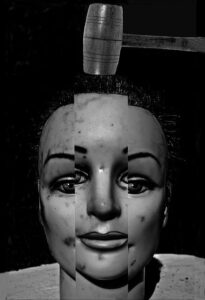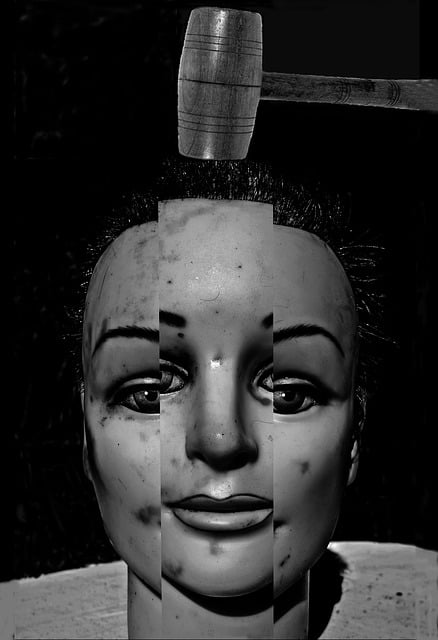
On September 23, 2020, Psychiatric Times published an opinion piece by a psychiatrist who was the director of Medical Psychiatry at Newton-Wellesley Hospital with the intriguing title, “Is It Time to Do Away With Psychiatry?” The Editor in Chief for Psychiatric Times felt the need to “editorialize” at the beginning of the article. First, he lauded their willingness to give voice to a “wide range of perspectives and opinions.” Then he proceeded to point out what he saw in the article that maligned their profession with inaccuracies. He defended psychiatry as a “young and exciting field of science” with an established place “in the center of medicine,” and rejected the assertion that it was a pseudo-science.
I’m not sure the Editor in Chief recognized how he was essentially talking out of both sides of his mouth when he congratulated the Psychiatric Times for publishing “Is It Time to Do Away With Psychiatry?”, and then immediately found fault with what the author of the opinion piece wrote—before the readers could read what he said for themselves! However, I don’t think psychiatry is as centered in medicine as he said it was. Psychiatry was facing questions of its legitimacy and whether it was a pseudo-science fifty years ago.
David Rosenhan and the Pseudopatients
In chapter 2 of Psychiatry Under the Influence, Robert Whitaker and Lisa Cosgrove described the turbulent times for psychiatry in the early 1970s when “Psychiatry Adopts a Disease Model.” Diagnostic practices were increasingly seen as problematic and the Rosenhan study, “On Being Sane in Insane Places,” brought things to a head. David Rosenhan had “pseudo-patients,” individuals with no prior history of psychopathology, show up at 12 different mental hospitals complaining of hearing voices saying things such as “thud,” “empty,” or “hollow.” They are the only symptoms they gave, and they were all admitted to the hospital.
Once admitted, the pseudopatients stopped complaining of any symptoms and behave normally, but in spite of this, none of the hospital staff ever spotted them as imposters. The only ones in the hospital who didn’t fall for their ruse were the “real” patients in the hospital. “The facts of the matter are that we have known for a long time that diagnoses are often not useful or reliable, but we have nevertheless continued to use them.” Rosenhan wrote in Science, “We now know that we cannot distinguish insanity from sanity.”
A psychiatric research and teaching hospital heard of Rosenhan’s study and publically doubted that such gross errors in diagnosis would have occurred at their facility. So, a further experiment was arranged at this hospital. The staff was informed that over a three-month time period, one or more pseudopatients would attempt to be admitted into their hospital. Staff members were asked to rate each person admitted in that three-month time period on the likelihood of whether or not they thought that the patient was a pseudopatient.
Judgments were obtained for 193 patients admitted during that time. Forty–one of the patients were judged with high confidence (1 or 2 on a 10-point scale) to be pseudopatients by one or more staff members of the hospital. Twenty–three were suspected by at least one psychiatrist as being a pseudopatient. Nineteen patients were thought to be faking by one psychiatrist and one staff member. Rosenhan said, “Actually, no genuine pseudopatient . . . presented himself during this period.”
If the existing system of psychiatric classification couldn’t distinguish between a pseudopatient and someone who was truly mentally ill, what good was it? If mental illness was really a myth, as Thomas Szasz said in The Myth of Mental Illness, if diagnoses were merely labels given to those who misbehaved, then psychiatry was not the scientifically valid profession it claimed to be. As Rosenhan commented in his article on the above findings, “any diagnostic process that lends itself so readily to massive errors of this sort cannot be a very reliable one.”
The Birth of Modern Diagnosis
Whitaker and Cosgrove said that shortly after the publication of the Rosenhan article, the trustees of the American Psychiatric Association (APA), met in Atlanta lamenting that the public did not seem to recognize psychiatry as a medical specialty. And we also failed “to recognize a psychiatrist’s special competence in mental health care.” The trustees recommended a revision of the DSM-II, and to have it completed within two years. They also saw that creating a new diagnostic manual would serve a guild interest for the APA and its psychiatrists. Remaking psychiatric diagnoses could be part of a new image for psychiatry, emphasizing that psychiatrists were doctors, and they treated real “diseases.”
In Shrinks, Jeffrey Lieberman described how the APA Board of Trustees realized the best way to deflect the “tidal wave of reproof” was to make a fundamental change in how mental illness was conceptualized and diagnosed. They agreed that the most compelling means would be to transform the DSM. By the end of the emergency meeting, the trustees had authorized the creation of the third edition of the DSM. Dr. Lieberman said Robert Spitzer wanted to be in charge of the revision process as soon as he heard it had been approved. Spitzer recalled, “I spoke to the medical director at the APA and told him I would love to head this thing.”
Because of the cultural upheaval with psychiatry in 1973 and the Rosenhan study, the APA asked Spitzer to oversee the revision process for developing the DSM III. He agreed to do so with the condition that he would have a free hand to purge the DSM of psychoanalytic concepts and psychodynamic analyses of ‘disorders.’ Given the social context of the time, the APA leadership agreed. Spitzer was able to appoint whomever he chose to the various diagnostic committees and task forces. He appointed individuals he saw as “young mavericks” who had a medical–biological emphasis and were not committed to the psychoanalytic tradition that had dominated psychiatry for decades.
I think it is fair to say that Spitzer had been aiming towards this appointment for almost seven years. His association with the DSM began in 1966, when he agreed to take notes for the DSM-II committee. Spitzer et al. also introduced the use of the kappa statistic into the literature on psychiatric diagnosis in their 1967 study, “Quantification of Agreement in Psychiatric Diagnosis.” In The Selling of the DSM, Stuart Kirk and Herb Kutchins commented that the introduction of kappa appeared to provide a way to unify the comparison of reliability studies, while eliminating the statistical problem chance agreement at the same time. Joseph Fliess, who would later be a coauthor with Spitzer in their seminal 1974 study, “A re-analysis of the reliability of psychiatric diagnosis,” was one of the other authors of the 1967 study.
In Psychiatry Under the Influence, Whitaker and Cosgrove said Spitzer thought the DSM-III would serve as a “defense of the medical model as applied to psychiatric problems.” The APA medical director told APA members that a “vigorous effort to remedicalize psychiatry should be strongly supported.” A Harvard psychiatrist argued that the “medical model is as appropriate for the major psychoses as it is for diabetes.”
The basic premise put forward was “that the primary identity of the psychiatrist is as a physician.” In the “Nature of Psychiatric Illness: Why Psychiatry is a Branch of Medicine,” Samuel Guze wrote the new model would focus on “the symptoms and signs of illness. . . the medical model is clearly related to the concept of disease.” He wrote that psychiatrists would now focus on reducing those symptoms. “Medical training is necessary for the optimal application of the most effective treatments available today for psychiatric patients: psychoactive drugs and ECT.”
Adopting a disease model would lead to a focus on treatments that allayed symptoms, and it would only be psychiatrists, thanks to their prescribing powers, that could provide patients with access to psychiatric drugs. Psychiatry might cede talk therapy to its competitors. But it would have this corner of the therapeutic marketplace to itself. . . Psychiatry was following a financial path to this role in the therapy marketplace, and adopting a medical model that focused on the “symptoms of a disease” that would obviously enhance the value of psychiatrists’ prescribing powers.”
A less publicized reason for revising the DSM–II was the drug industry’s need for a “reliable, standardized nomenclature” for diagnosing participants in government–required drug trials. If diagnosis could not be reliably done, it was difficult to determine exactly for whom a drug was effective. If a drug was not shown to be effective in treating a particular disorder, it could not be approved by the FDA. At the same time, third–party payment for psychotherapy was rapidly increasing. Insurance companies required diagnoses and they pressed for greater correspondence between diagnosis and treatment. This pressure focused more attention on the DSM–II and its problems.
This comment about the psychopharmacology industry is not some conspiracy theory. In “The DSM-IV Classification and Psychopharmacology,” Allen Frances and the DSM-IV co–authors noted in 2000 how the DSM system and psychopharmacology had “grown up” together and had a strong influence on each other.
The psychopharmacological revolution required that there be a method of more systematic and reliable psychiatric diagnosis. This provided the major impetus for the development of the structured assessments and the research diagnostic criteria that were the immediate forerunners of DSM-III. . . The development of explicit and reliable diagnostic criteria sets . . . was a necessary prerequisite for the development of meaningful psychopharmacological research.
When the DSM-III was published in 1980, it ushered in the beginning of diagnosis and psychiatry as we know it today. It was a major turning point in the history of American psychiatry. In effect, it unveiled a “new paradigm” for psychiatry. It changed the emphasis to a more biological model of mental disorder.
The DSM–III introduced a definition of mental disorder—amazingly something that had not been done in any of its previous classification systems. It emphasized empirical support for the diagnostic categories, something that had been absent in previous editions. It proposed that mental disorders be considered along multiple axes (which was removed from the DSM-5). It described in behavioral terms the criteria that must be present for the use of each diagnostic category. And its developers confidently asserted that the DSM–III represented both an advance in the “scientific aspirations of the profession” and “an emergent professional consensus over procedures that would eliminate the disarray that has characterized psychiatric diagnosis.”
But did it? More in Part 2.
See “A Censored Story of Psychiatry,” Part 1 and Part 2 and The Quest for Psychiatric Dragons, Part 1 and Part 2 for more information on the Rosenhan study, Robert Spitzer and the DSM-III.





